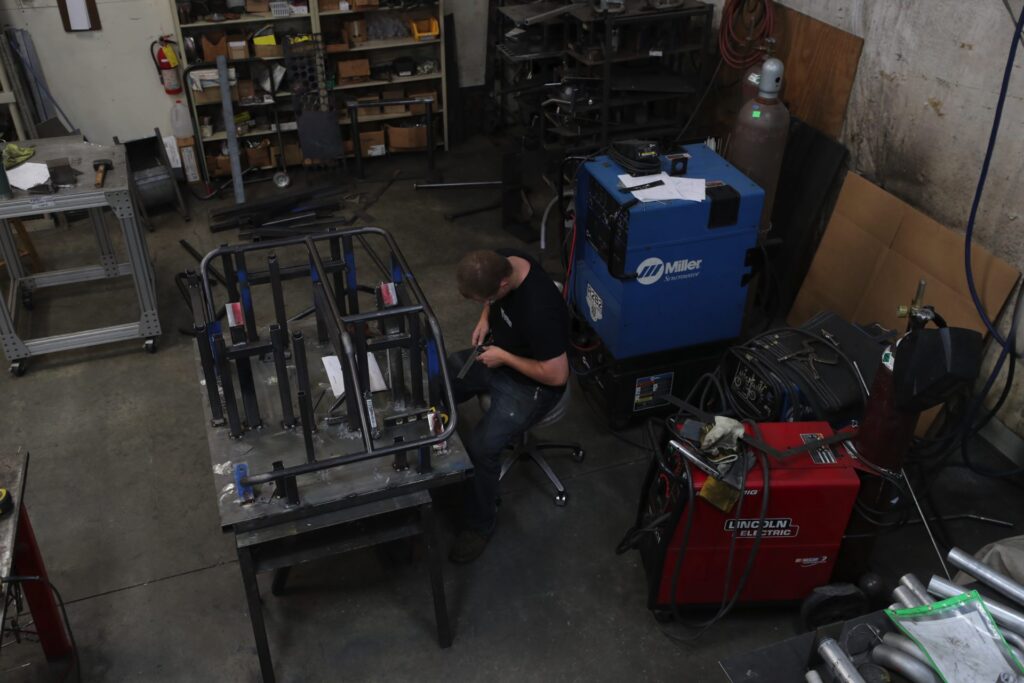
Tube bending is a metal forming process that creates permanent bends in tubes and pipes. It is a versatile process that can be used to create a wide range of shapes and bends, from simple u-bends to complex helical coils. Tube bending is used in a variety of industries, including automotive, aerospace, construction, and manufacturing.
What is tube bending?
Tube bending is the process of forming a permanent bend in a tube or pipe. This is done by applying a force to the tube, which causes it to deform. The amount of force and the direction in which it is applied will determine the shape and angle of the bend.
There are two main types of tube bending: hot bending and cold bending. Hot bending involves heating the tube to a high temperature before bending it. This makes the tube more malleable and easier to bend. Cold bending is done at room temperature and is typically used for thinner tubes.
Types of tube bending
There are several different types of tube bending processes, each with its own advantages and disadvantages. The most common types of tube bending include:
- Rotary draw bending: This is the most common type of tube bending and is used for a wide range of applications. Rotary draw bending uses a mandrel to support the inside of the tube during the bending process. This prevents the tube from collapsing and ensures that the bend is smooth and accurate.
- Mandrel bending: This type of tube bending is similar to rotary draw bending, but it does not use a mandrel. Instead, the inside of the tube is supported by a filler material. Mandrel bending is typically used for bending smaller diameter tubes or tubes with very tight bends.
- Roll bending: Roll bending is used for bending large diameter tubes or tubes with long bends. It involves passing the tube through a series of rollers that bend it gradually.
- Freeform bending: Freeform bending is used to create complex shapes and bends that cannot be achieved with other methods. It is a manual process that requires a skilled operator.
Materials that can be bent
A wide range of materials can be bent, including metals, plastics, and composites. The most common metals that are bent include steel, aluminum, brass, and copper. Plastics that can be bent include PVC, ABS, and polycarbonate. Composites that can be bent include carbon fiber and fiberglass.
The type of material that can be bent will depend on the bending process being used. For example, hot bending is typically used for bending metals, while cold bending can be used for bending both metals and plastics.
Applications of tube bending
Tube bending is used in a wide variety of industries, including:
- Automotive: Tube bending is used to create a variety of automotive components, such as exhaust systems, fuel lines, and brake lines.
- Aerospace: Tube bending is used to create aircraft components, such as engine manifolds, hydraulic lines, and landing gear.
- Construction: Tube bending is used to create structural components, such as handrails, piping systems, and scaffolding.
- Manufacturing: Tube bending is used to create a variety of manufactured products, such as furniture, appliances, and medical devices.
Benefits of using tube bending services
There are several benefits to using tube bending services, including:
- Expertise: Tube bending service providers have the expertise and equipment to bend tubes accurately and precisely.
- Quality control: Tube bending service providers have quality control procedures in place to ensure that all bends meet the customer’s specifications.
- Efficiency: Tube bending service providers can bend tubes quickly and efficiently, saving customers time and money.
How to choose a tube bending service provider
When choosing a tube bending service provider, there are several factors to consider, including:
- Experience: Choose a tube bending service provider with experience in bending the types of tubes and materials that you need.
- Capabilities: Make sure that the tube bending service provider has the capabilities to bend your tubes to the desired shapes and angles.
- Quality control: Ask about the tube bending service provider’s quality control procedures.
- Price: Compare the prices of different tube bending service providers to get the best deal.
Source Url:- https://shorturl.at/opDS9